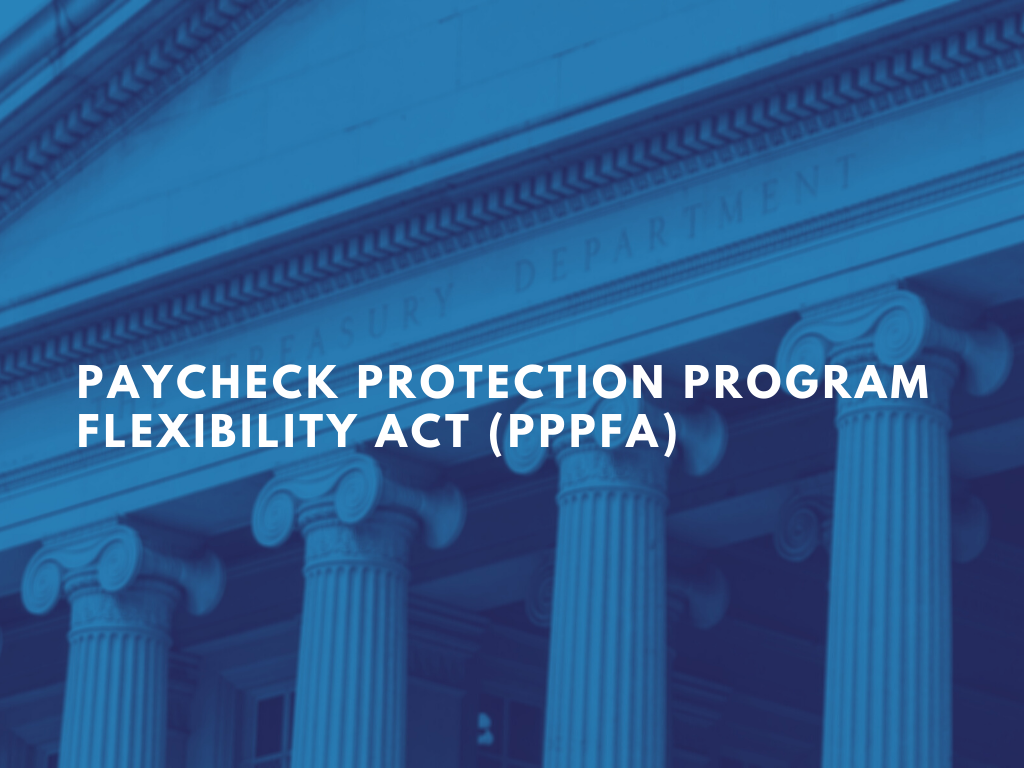
The U.S. Treasury, along with the Small Business Administration (SBA), announced several updates to the Paycheck Protection Program (PPP) rules and guidance through the Paycheck Protection Program Flexibility Act (PPPFA) of 2020. According to Treasury Secretary Steven Mnuchin and SBA Administrator Jovita Carranza, the PPPFA will help businesses by providing more time and flexibility to keep their employees on the payroll, and ensure their continued operations as the country reopens.
Key takeaways from the PPPFA changes are:
- The covered period for loan forgiveness is extended from 8 weeks to 24 weeks after the date of the loan disbursement. However, borrowers who have already received their PPP loans will have the option to use the 8-week covered period.
- The requirements that 75 percent of a borrower’s loan proceeds have to be used for payroll costs, and that 75 percent of the loan forgiveness amount must have been spent on payroll costs during the covered period, will be lowered to 60 percent for each of these requirements. However, borrowers who use less than 60 percent of the loan amount for payroll costs during the covered period will continue to be eligible for partial loan forgiveness, subject to at least 60 percent of the loan forgiveness amount having been used for payroll costs.
- The maturity of PPP loans approved by the SBA will be increased from two years to five years.
- PPP borrowers will now be able to take advantage of the CARES Act provision allowing deferment of the employer’s payroll taxes for Social Security, which was not allowed prior to the PPPFA.
- These new rules confirm that June 30, 2020 will remain as the last date for a PPP loan application to be approved.
- The new rule also extends until December 31, 2020 the deadline for businesses to rehire workers and comply with the forgiveness requirements.
The SBA will soon issue the complete updated rules and guidance, along with a modified borrower application form and a modified loan forgiveness application implementing the aforementioned amendments to the PPP.
Congress continues to consider additional changes to the PPP program that may result in additional changes.
If you have any questions regarding these changes and how they may affect your business, please do not hesitate to contact us.
©2020
Posted on
